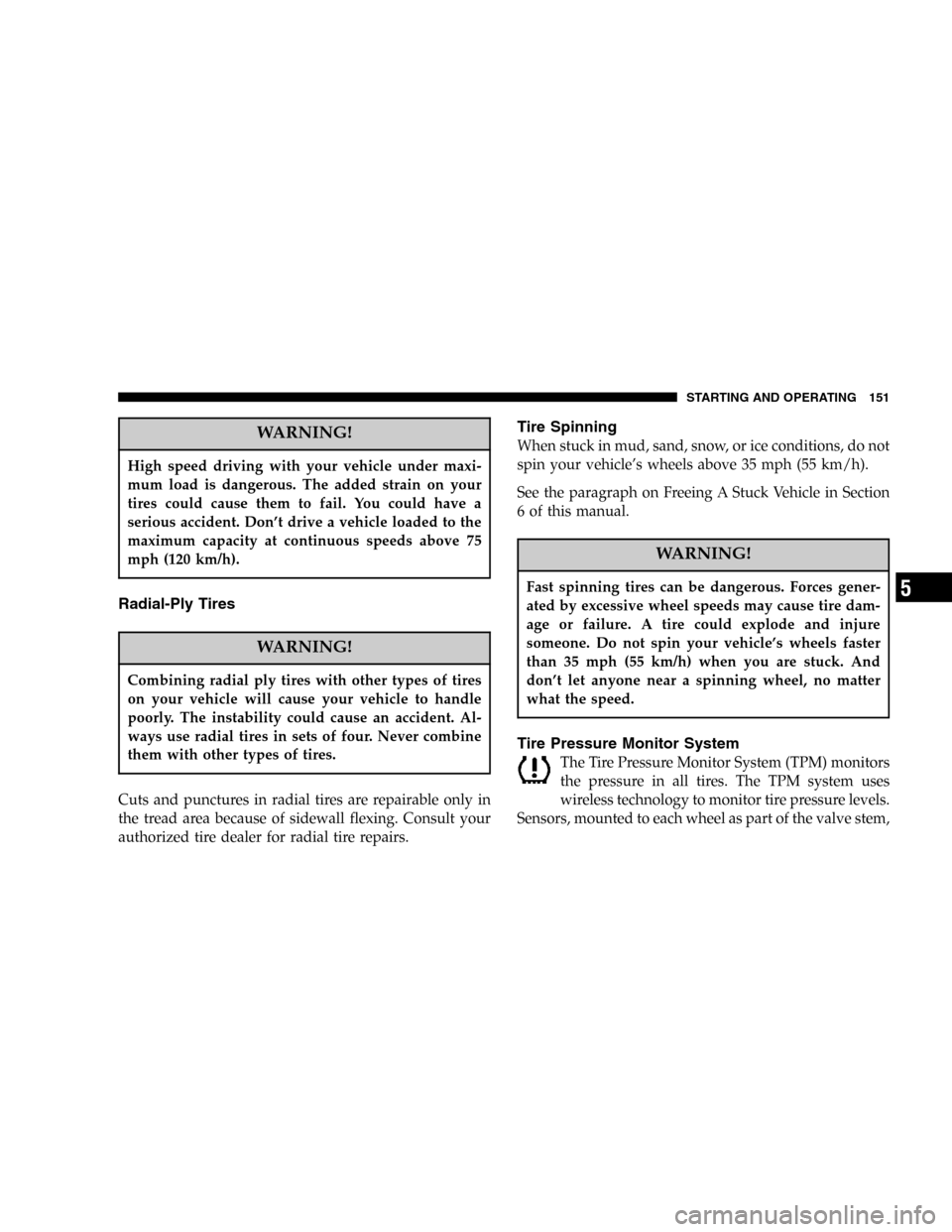sensor CHRYSLER CROSSFIRE SRT 2005 1.G User Guide
[x] Cancel search | Manufacturer: CHRYSLER, Model Year: 2005, Model line: CROSSFIRE SRT, Model: CHRYSLER CROSSFIRE SRT 2005 1.GPages: 280, PDF Size: 14.34 MB
Page 143 of 280

Synchronizing ESP
If the power supply was interrupted (battery discon-
nected or discharged), the BAS/ESP malfunction indica-
tor light may be illuminated with the engine running. To
re-synchronize the ESP, and cancel the malfunction indi-
cator light, the steering angle sensor will need to be
recalibrated.
1. Turn the ignition switch to the ON/RUN position.
2. Rotate the steering wheel to the center position.
3. Rotate the steering wheel completely to the left, and
then rotate the steering wheel completely to the right.
4. Bring the steering wheel back to the center position.
5. The BAS/ESP malfunction indicator light will go out.
If the BAS/ESP malfunction indicator light is still illumi-
nated, the vehicle should be serviced at an authorized
dealer.
ESP Control switch
The ESP control switch is located in the center console.
When the ESP is switched off, the warning light in the
instrument cluster comes on. When the ESP is switched
on, the warning light goes out.
To improve the vehicle’s traction when driving with
snow chains, or starting off in deep snow, sand, or gravel,
switch off the ESP by pressing the upper half of the ESP
switch. The ESP warning light will then be continuously
STARTING AND OPERATING 143
5
Page 151 of 280

WARNING!
High speed driving with your vehicle under maxi-
mum load is dangerous. The added strain on your
tires could cause them to fail. You could have a
serious accident. Don’t drive a vehicle loaded to the
maximum capacity at continuous speeds above 75
mph (120 km/h).
Radial-Ply Tires
WARNING!
Combining radial ply tires with other types of tires
on your vehicle will cause your vehicle to handle
poorly. The instability could cause an accident. Al-
ways use radial tires in sets of four. Never combine
them with other types of tires.
Cuts and punctures in radial tires are repairable only in
the tread area because of sidewall flexing. Consult your
authorized tire dealer for radial tire repairs.
Tire Spinning
When stuck in mud, sand, snow, or ice conditions, do not
spin your vehicle’s wheels above 35 mph (55 km/h).
See the paragraph on Freeing A Stuck Vehicle in Section
6 of this manual.
WARNING!
Fast spinning tires can be dangerous. Forces gener-
ated by excessive wheel speeds may cause tire dam-
age or failure. A tire could explode and injure
someone. Do not spin your vehicle’s wheels faster
than 35 mph (55 km/h) when you are stuck. And
don’t let anyone near a spinning wheel, no matter
what the speed.
Tire Pressure Monitor System
The Tire Pressure Monitor System (TPM) monitors
the pressure in all tires. The TPM system uses
wireless technology to monitor tire pressure levels.
Sensors, mounted to each wheel as part of the valve stem,
STARTING AND OPERATING 151
5
Page 152 of 280

transmit tire pressure readings to a computer which
monitors for low pressure. If low pressure is measured,
the TPM Indicator Light will illuminate.
The TPM system informs you of a low tire pressure
condition. If this occurs, correct your tire inflation pres-
sure as soon as possible, and inspect all of your tires. Be
sure to use a high quality gauge when adjusting pressure.
The TPM system is designed to periodically monitor your
tire pressure but cannot be expected to function as a tire
pressure gauge. There can be a delay between the instant
you adjust the air pressure in a tire and when the system
updates the display. The TPM system is not intended to
provide you with notification of rapid air loss.
The TPM system will cause the indicator lamp in the
instrument cluster to illuminate whenever the pressure in
one tire falls 25% below the recommended pressure
shown on the tire label.
NOTE:A TPM system does not replace normal tire
maintenance.
CAUTION!
The TPM system has been optimized for the original
equipment tires and wheels. TPM system pressures
have been established for the tire size equipped on
your vehicle. Undesirable operation or sensor dam-
age may result when using replacement equipment
that is not of the same size, type, and/or style.
Aftermarket wheels can cause sensor damage. Do
not use aftermarket tire sealant or balance beads as
damage to the sensors may result. The standard
TIREFIT system (see Tirefit Tire Repair and Jacking
Instructions in the What To Do In Emergencies
section) is specifically designed to operate in con-
junction with the TPM system, and will not damage
the sensors.
NOTE:The pressure in your tires changes with tem-
perature. A significant decrease in temperature could
reduce cold inflation pressure below the TPM setpoint.
For example, tires inflated to the proper cold inflation
pressure on a warm day or in a warm garage could
illuminate the TPM indicator lamp on the following day
152 STARTING AND OPERATING